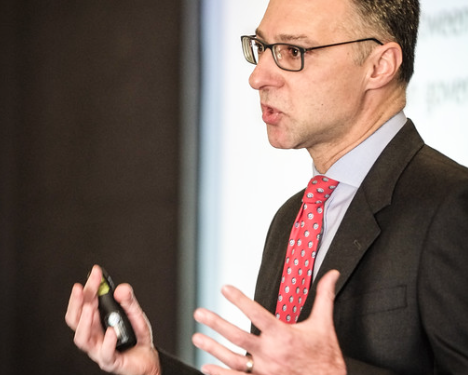It would be wrong not to tell investors the true extent of the risks they are taking in drawdown, says Nest chief investment officer Mark Fawcett.
Telling people what they want to hear can be tempting, particularly when the realities of a situation might be difficult to swallow. But the emerging culture around the new pensions framework is no place to shy away from truths that some scheme designers and their customers may find uncomfortable.
In this new, more flexible regime we know many pension savers won’t automatically buy annuities that mitigate both investment risk and the risk of outliving their money, even if it may be in their interests to do so.
ABI statistics show that in Q2 2015, £990m was invested in annuities, a 44 per cent decrease from the £1.8bn invested in Q2 2014. In the same three months following the launch of the new pension freedoms, 18,200 annuities were purchased. This is a 61 per cent fall from Q2 2014, when 46,700 were taken out.
The drift away from old world annuities leaves us with an obligation to talk frankly with each other, and with our customers, about the realities of the alternatives available.
We are all trying to meet savers’ needs against a backdrop in which consumers applaud the end of compulsory annuity purchase. Strong behavioural factors including loss aversion and the perception of annuities as poor value are issues here.
Retirees have also long been worried about dying shortly after buying an annuity and ‘losing their money to an insurance company’.
We recently carried out qualitative research showing that when it comes to the features DC savers think are most important in a retirement arrangement, security remains paramount. Providing a regular income, certainty that their money won’t run out and also certainty of the level of regular income would seem the highest-rated features.
But DC savers also want the freedom to change their minds about the choice they’ve made, to be able to pass money on as well as have access to ad hoc lump sums. These are genies that will not get back in their bottles.
What we can’t do when faced with this challenge is tell ourselves and our prospective customers that all of the above can be achieved without taking investment risk.
That’s where industry language such as ‘risk of ruin’ comes into play. Some may argue that this overplays the potential dangers but where income is invested to provide a retirement income there will be a risk of ruin or, to put it more plainly, running out of money.
By not talking about it, the fact doesn’t go away and isn’t made any easier to manage, which is what product designers for the mass market need to do.
It’s by facing up to the challenges of taking investment risk in mass market retirement income arrangements that we can start to find the governance solutions that address them.
Strong governance means savers won’t find themselves exposed to investment strategies that, while
promising a world of flexibility and hinting at security of income, actually carry a world of uncertainty and a high chance of being financially compromised in later life. It ought to mean that savers find themselves in strategies able to combine security and flexibility through prudent investment management.
For Nest’s part, our blueprint vision for meeting members’ needs is designed to provide them with a sustainable income for life through three building blocks: an income drawdown fund, a cash lump sum fund and a later life protected income provided by deferred annuities.
A key design principle of the income drawdown fund would be to achieve a high probability of generating a sustainable income until the later life protected income kicks in.
The strategy should carry a very low risk of running out of money, so implies a relatively prudent investment approach and extremely robust risk management. If there is any chance of running out of money, the deferred annuity can be adjusted to start earlier if necessary.
When you take investment risk to provide an income in retirement, it is never going to provide the security of annuity, no matter what you call it. We do ourselves, the pensions and investment industry and most importantly consumers a disservice if we suggest anything else.
So let’s keep having candid conversations about what the freedom and choice reforms mean in terms of both the opportunities and challenges to scheme designers. We owe it to savers to address these realities, not sidestep them.





